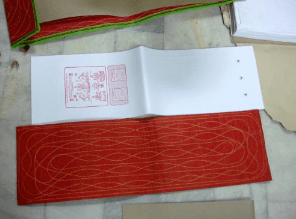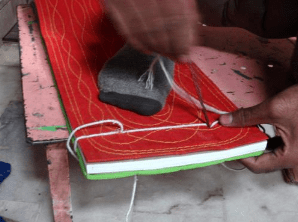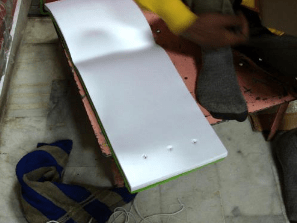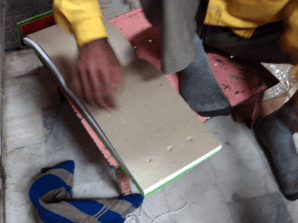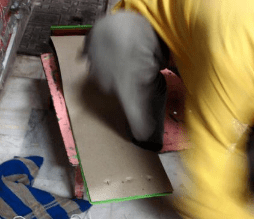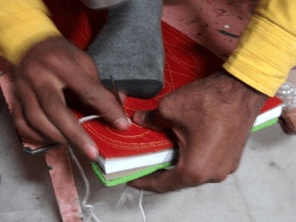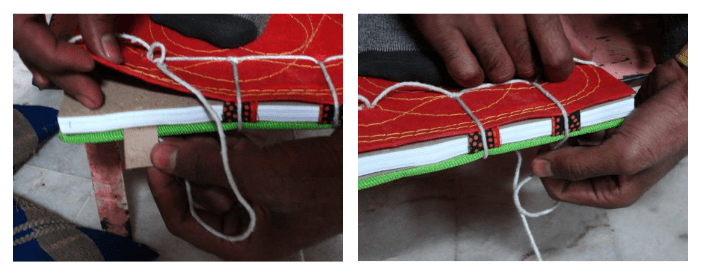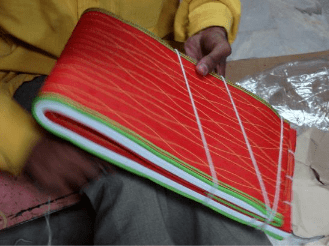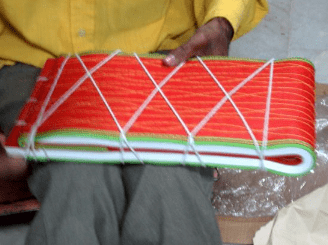Handbound Notebooks Bahi
Handbound Notebooks Bahi is a diary used for ledger keeping and accounting since many decades in India. It is nearly as ancient as the Bahi-Khata System. Actually, the Bahi-Khata system is a fully fledged double entry system.
A variety of Bahi’s are used for the same purpose and with the growing trend, they are also being used for journal keeping, sketching, horoscopes etc. In today’s time, bahi’s are less favored than computers for account keeping.
History of Handbound Notebooks Bahi
The Bahi-khata is a double-entry system of bookkeeping that predates the ‘Italian’ method by many centuries. Its existence in India prior to the Greek and Roman empires suggests that Indian traders took it with them to Italy, and from there the double-entry system spread through Europe.
The transactions are first entered in the rokad-bahi (cash book), and then posted into the khata-bahi (ledger). A nakal-bahi serves as the journal. Finally a trial balance (kaccha ankada) is also prepared. The system also uses the concept of naam (debit) and jamaa (credit) for maintaining the books.
The Bahi-khata system is still used in many parts of South Asia by traditional traders. It is widely used in the Indian states of Gujarat and Rajasthan, as also in Sindh province of Pakistan. There are reports of its use in some pockets of Andhra Pradesh, West Bengal, Jharkhand, Bihar, Uttar Pradesh and Tamilnadu.
Bahis are now used for various purposes like keeping ledgers / matching horoscopes for marriages / family trees / general diaries’. But in olden days, it was primarily used for ledger keeping. Earlier when paper did not exist, ledgers were maintained to record transactions for the King.
They were done by means of Tampatra –copper sheets in the early years followed by the use of Bhojpatra–tree leaves. Nowadays, handmade paper and machine-made paper are widely used for ledger keeping.
People purchase a new bahi each year during Diwali. They mark the year on the bahi and only start using it at an auspicious time. A Bahi is worshiped as it is considered a good sign for running the business.
Regions of Production Handbound Notebooks Bahi
Bahi (s) are found in most regions of India as it is sold across the country. Because of its easy production process, it is produced in many areas around India. But the main regions of production:
- Jaipur
- Sanganer
- Chawri Bazaar Delhi
Production takes place only twice a year i.e during Diwali (OCT –NOV) and beginning of new financial year (March –April)
Craftsmen or labour does not belong to any particular community. The labour is seasonal and hired on part time basis as the production is also seasonal.
Raw Materials of Handbound Notebooks Bahi
- Cotton Cloth–sourced locally
- Thread for binding–sourced locally
- Paper (handmade or machine made)–machine made from Saharanpur, U.P. Handmade paper from Jaipur, Rajasthan
- Niwar( for outer lining)–Sourced locally
- Thread for sewing–Sourced locally
- Cardboard –Made in Jaipur and also sourced from Ahemdabad.
Tools of Handbound Notebooks Bahi
- Summa–for piercing
- Needle
- Chaku( knife) for cutting extra thread
- Paper cutting machine
- Sewing machine
- Adhesive
Production Process in Handbound Notebooks Bahi
Manufacturing a single Bahi is quick process. The process is mostly carried out by hand, certain processes like paper cutting and decorative stitching is carried out by machines. A single bahi is usually completed in one hour, once the paper rim is cut.
Firstly, the paper rim is cut in the desired size by a paper machine. The paper can be handmade or machine made, depending upon the requirements. Paper used sometimes also has embossed columns, which makes it easier to use for accounting. Folding and stitching the paper together, in the desired size and orientation is the next step.
The cardboard is finished and produced separately; It is later stitched along the cut and sown paper rim. The binding cardboard is cut to size and a cotton cloth is pasted onto the cardboard.
To give the cardboard added strength, the cloth and the cardboard are sewn together with a sewing machine. Doing this adds value to the bahi cover.
A cotton tape which is called Niwar in the local dialect is stitched on the sides of the cover. Niwar helps in preventing the sides from fraying in the long run and gives bahia neater look. Niwar is available locally and can be found in a variety of sizes and colours.
Before stitching the cover and the paper together, sometimes a yellow or white paper is added in the beginning of the bahi. This paper contains images of gods and goddesses and the Chaughadiya.
Chaughadiya is the calculations of the auspicious and the non auspicious hours of the days. Each day is divided into 7 such divisions. So when the hour is auspicious, according to the Chaugadiya, a bahi can be started for account keeping.
The paper and the cardboard is then sewn together with thread and needle and sealed off with knots.
For any finishing like loose threads or paper, a chaku is used. A Bahi is finally tied with a thin cotton rope to keep it intact and closed.
Products and its uses
- Ledger Keeping
- Family tree
- Matching horoscopes
- General diary use
- Journal keeping
Types of product of Handbound Notebooks Bahi
There are 4 types of bahi’s :
- Long Bahi
- Horizontal Bahi
- Rokat Khata( cash book / ledger)
- Jama Nakal( Credit / Debit book )
1. Vertical (kitaabnuma)
2. Horizontal (Bahinuma)
•Index bahi–This works exactly like any index. The index bahi is separate from the main bahi and contains the page numbers for the respective topics or names.
Miscellaneous
Craftsmen or shopkeepers in this trade are trying to divert from Bahi making. This is so because they feel computers are taking over bahi’s and their sale is decreasing. To keep the trade going, one can find decorative verities of bahis. These maybe used as photo albums, journals or diaries.



